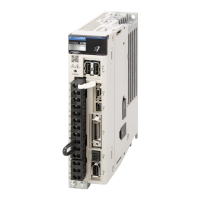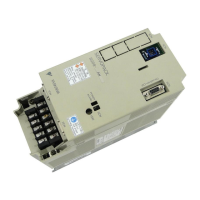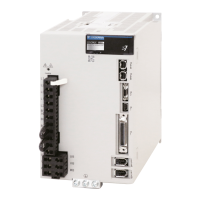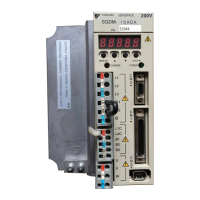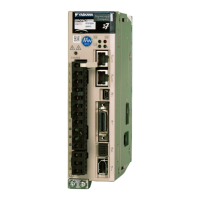4.2 Motion Command Details
4.2.5 LATCH (Latch)
4-46
4.2.5
LATCH (Latch)
The LATCH command saves the current position to a register when the latch signal is detected
during interpolation feeding.
Set bits 0 to 3 (Latch Signal Selection) in the OW04 setting parameter to select either
phase-C pulse, /EXT1, /EXT2, or /EXT3 for the latch signal.
Execution and Operating Procedures
1.
Make sure that all of the following conditions are met.
* Before you change to this command during the execution of another command, you must check whether
the command can be changed and how operation changes when the command is changed. Refer to the
following section for details on changing from another command.
4.4 Changing the Command on page 4-137
2.
Set the following setting parameters.
• OW01, Bit 3 (Speed Loop P/PI Switch)
• OW03, Bits 8 to B (Filter Type Selection)
• OW04, Bits 0 to 3 (Latch Signal Selection)
• OL0C (Torque/Force Reference Setting or Torque Feedforward Compensation)
• OW12 (Speed Limit)
• OL14 (Torque/Force Limit)
• OL1C (Position Reference Setting)
• OW30 (Speed Feedforward Compensation)
3.
Set the OW08 setting parameter (Motion Commands) to 6 to execute the LATCH
motion command.
During positioning, the IW08 monitor parameter (Motion Command Response Code) will be 6.
4.
The value of OL1C is updated every high-speed scan.
The target position is updated to the updated value of OL1C.
The difference between the target position of one high-speed scan and that of the next high-speed
scan determines the travel speed.
When the target position is reached, bit 1 (Positioning Completed) in the IW0C monitor param-
eter will change to 1 (Within positioning completed range) and positioning will end.
• Speed feedforward compensation can be applied.
• If you want to execute the LATCH command again after you have already latched the cur-
rent position with the LATCH command, change the motion command code to NOP for at
least one scan before issuing the LATCH command again.
• Torque feedforward compensation can be used with the LATCH command. The torque
feedforward compensation is set in the OL0C setting parameter (Torque/Force Refer-
ence Setting or Torque Feedforward Compensation). If torque feedforward compensation is
not necessary, set OL0C to 0.
• The torque can be limited with the OL14 setting parameter (Torque/Force Limit).
OL14 can be changed at any time. The intended operation may not be achieved if
the set value is too small.
No. Execution Condition Confirmation Method
1 There must be no alarms. Both IL02 and IL04 must be 0.
2 The Servomotor’s power must be ON. Bit 1 in IW00 must be 1.
3
Motion command execution for the target axis
must be completed.*
IW08 must be 0 and bit 0 in
IW09 must be 0.
• When bit 5 (Position Reference Type) of the OW09 setting parameter is set to the
incremental addition method, the previous target position is added to the difference
between the current value and the previous value of OL1C to find the target
position.
• Always consider the latch processing time that is obtained with the following equation
when executing the LATCH command.
Latch processing time = 1 scan + MECHATROLINK transmission cycle + SERVOPACK
processing time (250 μs max.)
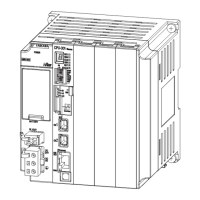
